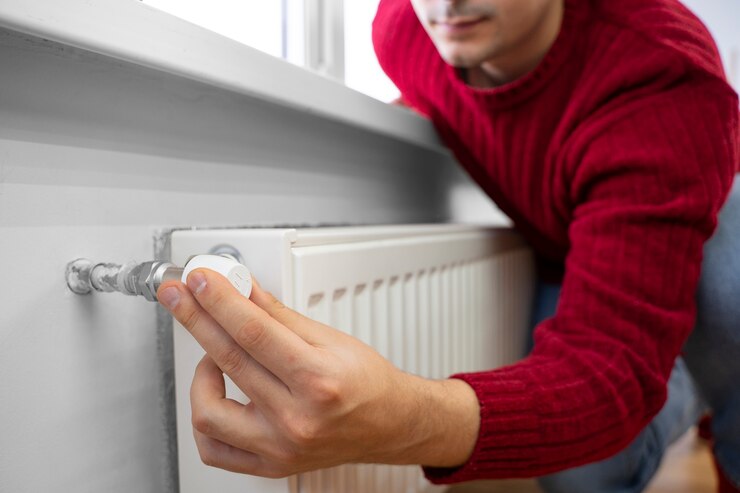
On building machinery, the cooling system is sometimes overlooked until an engine overheats, a machine bogs down due to the heat, or parts begin to exhibit strain. Spending the time to do upkeep can seem like a futile hindrance when a worksite becomes busy, and projects start coming in quickly, but giving a little more care to the crucial component of the cooling system — the radiator — will frequently result in longer unbroken periods of smooth functioning. We’ve put up these six short suggestions that will assist you in maintaining your radiator and radiators outlet and keep it operating at its peak efficiency.
Keep Debris Away From Cooling Fins And Other Components
Everyone has likely encountered that one person who will open a service door just to have a jack-in-the-box explosion of debris fly out of it. Many are going to be shocked to learn how much even the tiniest bit of debris may harm the vehicle, even though most individuals become wide-eyed whenever they see someone pushing into risky terrain. Regular pauses to clean the area surrounding the radiator, wash off the guards and cooling fins, and maintain airflow will help the machine function as a whole. A skilled operator will recognise situations which are dusty and full of debris, which will cause more material to accumulate around the radiator, and they will dedicate special care to maintaining the system free of obstructions.
Usually, on hot summer days, we worry most about our cooling system. However, in the autumn, whenever the air becomes more and more laden with dried plant material and is smoky or dusty, a fan may be able to draw in particles that are just the right size to build up close to the radiator and cause problems.
Regularly Check The Fluid
The frequency of coolant changes for your equipment is going to be specified in the operator’s handbook, but regularly checking the coolant for colour and uniformity is a useful approach to identifying problems early. Although it only requires a few more minutes, including a coolant check to your routine upkeep can frequently avoid more serious issues.
If you do notice difficulties with your coolant, it may indicate that there is trouble somewhere. By looking into it more, you may be able to discover and address little concerns before they become more serious. Beyond coolant difficulties, the easiest issue to find when you don’t regularly check your coolant is missing or low coolant amounts. This is the key issue which contributes to the biggest problems. You’ll be relieved that you spotted the issue before it spread to another location whenever you take a moment to measure your coolant and find that it’s abnormally low.
Make Use Of The Proper Fluid
The operator’s manual for your machine will provide you guidance on what fluid to use under various conditions, similar to coolant change regimens. Making sure the proper fluid is pumping through your machine may seem excessively basic, but it’s one of the easiest ways to maintain the optimal performance of both your coolant system and your machine as a whole.
Verify Thermostat Is Operating Correctly
Most radiators have a quite simple, large thermostat, yet when it breaks, it can cause some very annoying, perplexing problems. When a thermostat sticks open or closed, it prevents the radiator from correctly regulating the coolant temperature, which may end up in extreme temperature swings. You can identify thermostat problems by letting the machine run and warm for some time and watching temperature readings for sharp temperature swings. Whenever problems arise, you can replace the thermostat while the machine is in the best possible position or schedule periodic upkeep to prevent the problem from becoming worse at the worst possible times.
Be Aware Of Coolant Leaks
Not all coolant leaks are obvious, and even the tiniest leaks have the potential to grow into larger, more problematic ones very swiftly. Leaks can be found and stopped before they form by taking the time to examine the plugs, hoses, caps, and connections in radiators and other parts of the cooling system. Although coolant leaks may happen almost anywhere in the cooling system, you can identify leaks more quickly if you pay close attention to regions where parts are clamped tightly or where various materials are being combined.
Change Out A Badly Operating Radiator
Every component on your machine has a functional life, and the harsh conditions found in construction equipment may imply that a part is tested often. A functioning radiator is essential to the longevity of your machine.
Final Words:
The key to preserving your machine operating at ideal temperatures and preventing overheating is a functional and well-maintained radiator. Despite serious problems, however, a well-operating cooling system and radiator may boost the machine’s performance and reduce wear and tear on its components. The straightforward lesson is that you may save money by spending a few minutes more maintaining your cooling system and radiators.
Also, read: Tips To Help You Select the Best Radiators for Your Home







